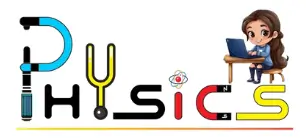De Morgan’s Laws are fundamental principles in digital electronics that provide a set of rules for simplifying Boolean expressions. Named after the British mathematician and logician Augustus De Morgan, these laws are essential for designing and analysing digital circuits. They are particularly useful for simplifying complex Boolean algebra expressions, making the design and analysis of digital systems more manageable.
Boolean Algebra Recap :
Before delving into De Morgan’s Laws, it’s crucial to understand Boolean algebra. Boolean algebra deals with binary variables and logical operations (AND, OR, and NOT). In digital electronics, these operations are represented using symbols and algebraic expressions.
De Morgan's Laws :
De Morgan’s Laws consist of two primary principles:

First Law (De Morgan's Theorem for AND) :
Applications of De Morgan's Laws:
Circuit Simplification:
One of the primary applications of De Morgan’s Laws is in simplifying complex Boolean expressions. By applying these laws, engineers can reduce the number of gates and simplify the overall circuit design, leading to more efficient and cost-effective digital systems.
Logic Circuit Design:
De Morgan’s Laws are widely used during the design phase of digital circuits. Engineers can manipulate Boolean expressions using these laws to create circuits with fewer components, reduced power consumption, and improved performance.
Fault Detection and Correction:
The laws are also essential in fault detection and correction within digital circuits. Understanding and applying these laws can help engineers analyse and troubleshoot circuits, ensuring their reliability and robustness.
Programming and Computer Science:
De Morgan’s Laws are not limited to hardware design; they are also applicable in software development, especially in areas involving Boolean logic, such as programming and computer science.
Conclusion:
In summary, De Morgan’s Laws play a crucial role in digital electronics, offering a powerful tool for simplifying and optimising Boolean expressions. Understanding and applying these laws are essential skills for engineers and designers working in the field of digital systems, ensuring the efficient and reliable operation of electronic circuits.




